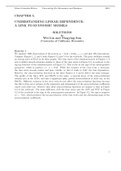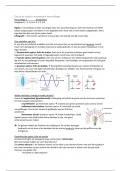Exam (elaborations)
Chapter5 UNDERSTANDING LINEAR DEPENDENCE: A LINK TO ECONOMIC MODELS_solutions University of Alabama EC 410
- Course
- Institution
CHAPTER 5. UNDERSTANDING LINEAR DEPENDENCE: A LINK TO ECONOMIC MODELS SOLUTIONS by Wei Lin and Yingying Sun (University of California, Riverside) Exercise 1 We simulate 1000 observations of the process pt = 6.43 + 0.55pt−1 + εt and plot 100 observations. Compare Figures 1, 2, and 3 with...
[Show more]




